Equipment: Choosing your wrist guards
Falls on the wrists are more than a third of the traumas recorded in the casualty departments of hospitals taking skaters in. It is quite normal, given that you instinctively try to absorb you fall with your hands. Here are a couple of tips for you to make the right choice.
Par alfathor
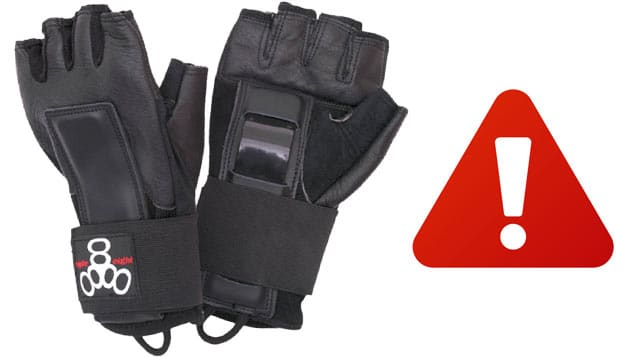
Different choices according to practices
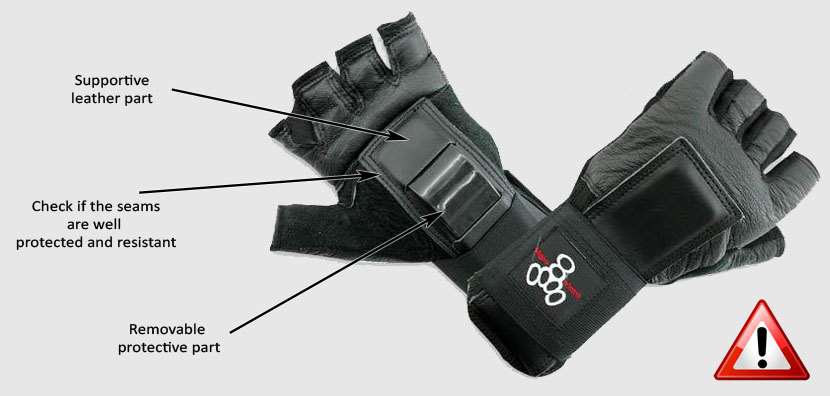
Supportive leather part
Check if the seams are well protected and resistant
Removable protective part
There are products of very different quality on the market. Fortunately, the European norms have imposed specifications to importers and manufacturers. There was a time when you could really just find anything on display. Yet, look for the « CE » label on the product.
Wrist guards with removable plate: should be avoided in most cases
Without marching against that kind of pads, let’s still insist on the fact that it is not always reliable on the long term.
Indeed, the leather parts, supporting the removable part on which you slide if you fall, come undone or wear off quite fast.
So that during a fall, the part supporting the wrist may happen to simply go off. Just imagine the consequences…
Palm guards: Caution!
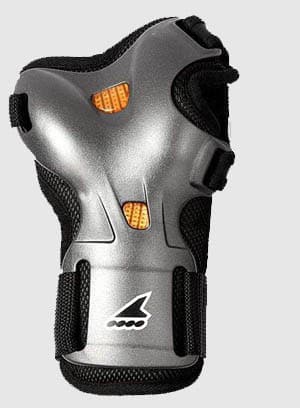 The point of wearing a wrist guard is that it protects the hand… but also the wrist. Yet, palm guards, as the name suggests, only protect the palm of the hand. Their small size does not offer any support for the joint between the hand and the forearm. They will not prevent wrist fractures.
The point of wearing a wrist guard is that it protects the hand… but also the wrist. Yet, palm guards, as the name suggests, only protect the palm of the hand. Their small size does not offer any support for the joint between the hand and the forearm. They will not prevent wrist fractures.
Here again, if you do not use that type of equipment, move along!
All in one piece guards: a safer solution
Prefer guards that are cast in one piece, such as the opposite picture, if you want to avoid bad surprises.
The underside generally goes with a glove or is supported with straps. Glove models are easier to slip on. Both fastening system often complete each other.
The upper part should be relatively flexible in order to avoid traumas.
The two hard parts should go up enough on the forearm to be efficient.
They should not be too rigid as they would only shift the lesion higher if they support the wrist too strongly.
Standard guards (short and rigid) are initially made to prevent traumas of the heel of the hand during slides on asphalt (which are mainly wounds).
The main mechanism of bone lesions is due to a hyperextension of the wrist, which causes a fracture by compression of the low end of the radius (a very frequent fracture in skating but also in snowboarding for example).
These short and rigid guards have a drawback: they transmit the compression force at the low end of the radius, just above the wrist join, that is to say at the upper part of the gear!
That is why we would rather suggest you to wear longer and more flexible guards, the advantage of which is to take and absorb the compression force, and which have proved to be successful.
Do not tighten too much
In order to avoid forearm fractures, be careful not to tighten the back of your guard. It your forearms is not a little loose, you could break it just above the guard.
Choosing your size and not inverting your hands
Just like gloves, wrist guards have hands. Most of the manufacturers indicate on the palm or on a tag which hand goes with which guard: « L » for « Left » and « R » for « Right ». Once you have put your guards on, turn your hands with the palms facing the ground. The rounded part should always be underneath.
Sizes work just like gloves or like some clothes: S, M, L. If you do not know your size, slip on the guard. If it is too small, you will have a hard time slipping it on. If it is too big, it will be too loose once tightened and will stick out too much on your phalanxes.
What price?
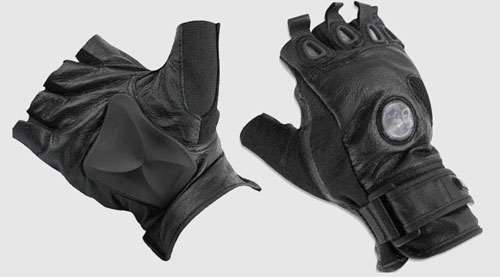
You can find anything, especially with complete packs (elbow, knee pads and wrist guards), but you should be careful about the quality.
Count on paying around 15€ for a good pair of entry-level wrist guards. The average of good quality products is available around 20€. Count on paying up to 25€ even 40€ for the most advanced models. It all depends on the concerned discipline.
Wrist guards for aggressive skating
For aggressive and ramp skating, skaters like reinforced gloves (when they wear protective pads, which is far from being frequent).
They enable to better grab the coping of ramps, but also to avoid splinters on wooden U’s. If they are equipped with a support plate or equivalent, they are far more useful than a simple oven glove.
If you are a beginner and you do not spend your time grabbing, choose a product with a rigid part on the palm just like in street skating.
In aggressive skating, falls are frequent and sometimes violent. Do not neglect your health under the pretext of wearing no pads like your friends.
Speed skating wrist guards
Speed skaters could wear classic wrist guards like in fitness skating but they are inconvenient in the pack. Cycle gloves are very handy and can be used if they are reinforced. If they do not prevent from wrist fractures, they limit scratches and burns.
If you feel not confident enough, classic wrist guards will perfectly do. Now, you can find palm-guards specially made for speed skating. They are more and more used in the Elite category.
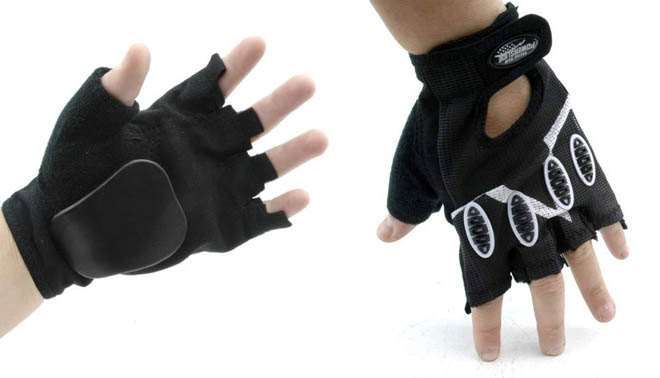
Hockey gloves
The most important is to allow a good grip for the stick. Avoid classic wrist guards which considerably impede the handling. Gloves are compulsory in hockey skating.
And what about downhill?
Some skaters use gardening gloves in addition to classic wrist guards to avoid finger burns. But the problem is that it does not slide well on asphalt. Other skaters reinforce their guards with pieces of metal or plastic. Downhill is a world of resourcefulness and creativity.
Conclusion
Choosing your wrist guards is as serious as choosing your skates. If you have a limited budget to buy your skates, count on paying 15 to 20€ more whatever happens in order to get wrist guards, even if it means getting skates slightly under the range ou were aiming at. Price does not necessarily rhymes with efficiency, do not pounce on top range products.
Hands have no less than 27 bones each, they are complex members that should be protected. Our hands are our main work tools. We use them all day long and some people even need them to talk. Do not neglect them!
Links
Translation: Chloé Seyres
Photos: HawaiiSurf & all rights reserved
